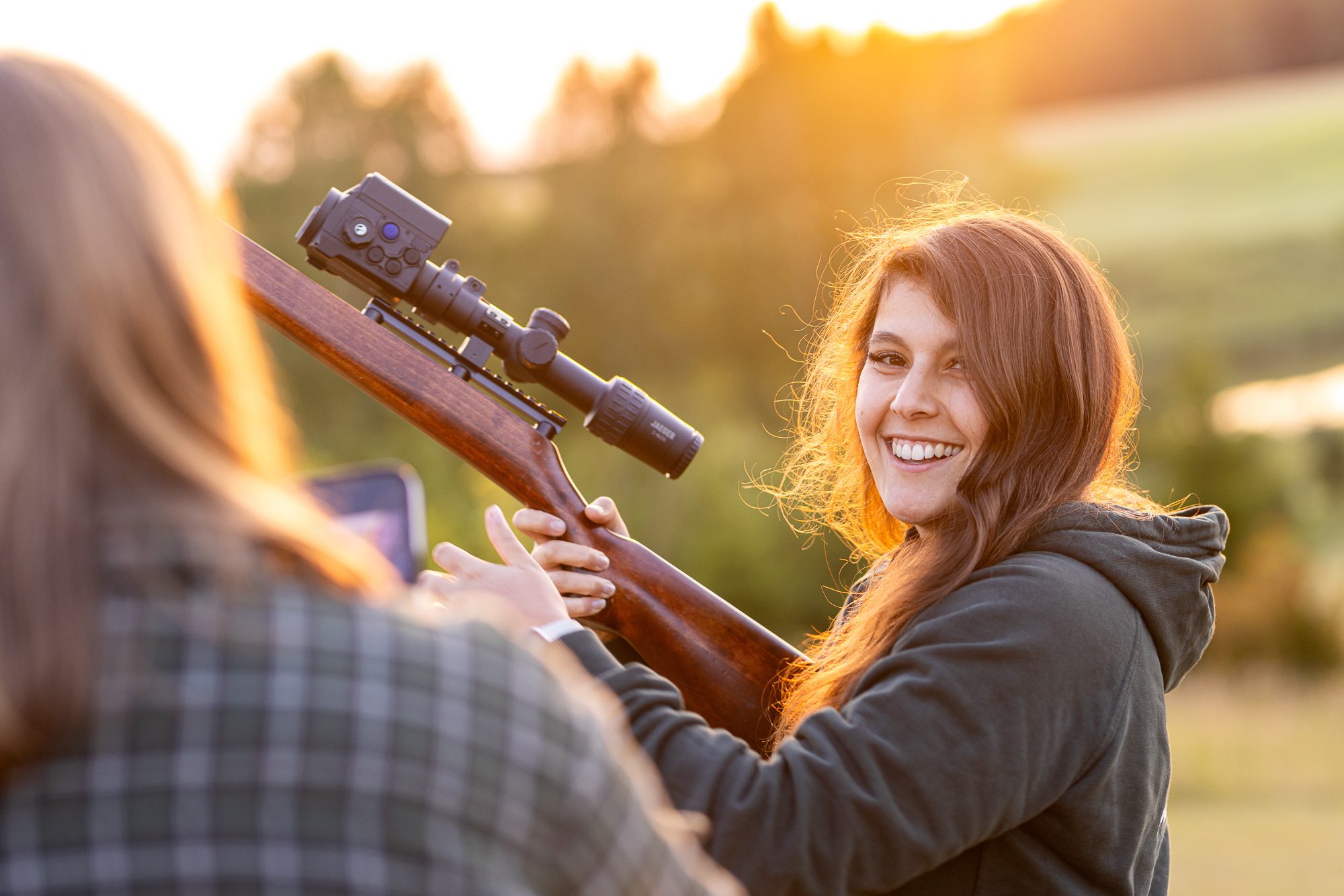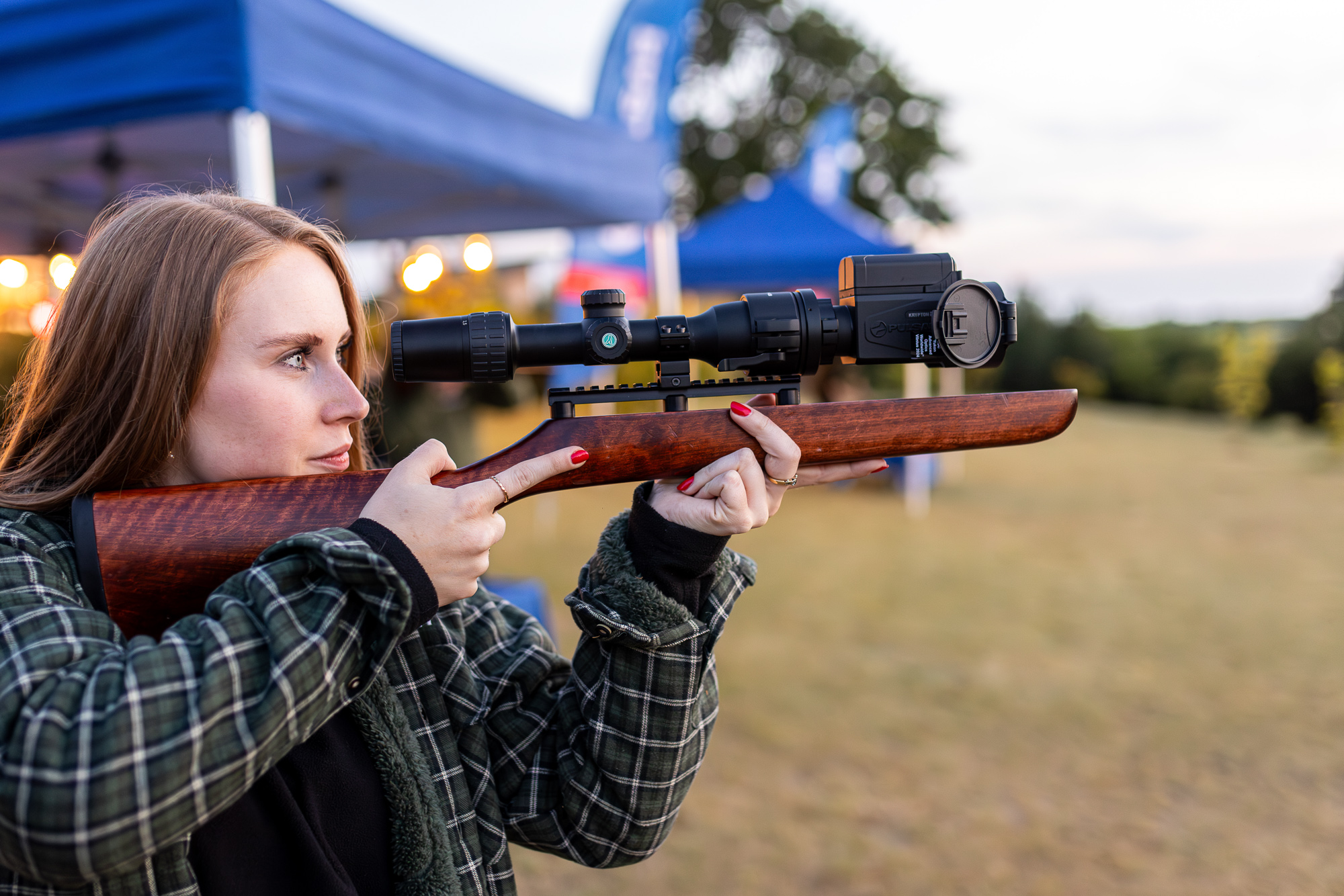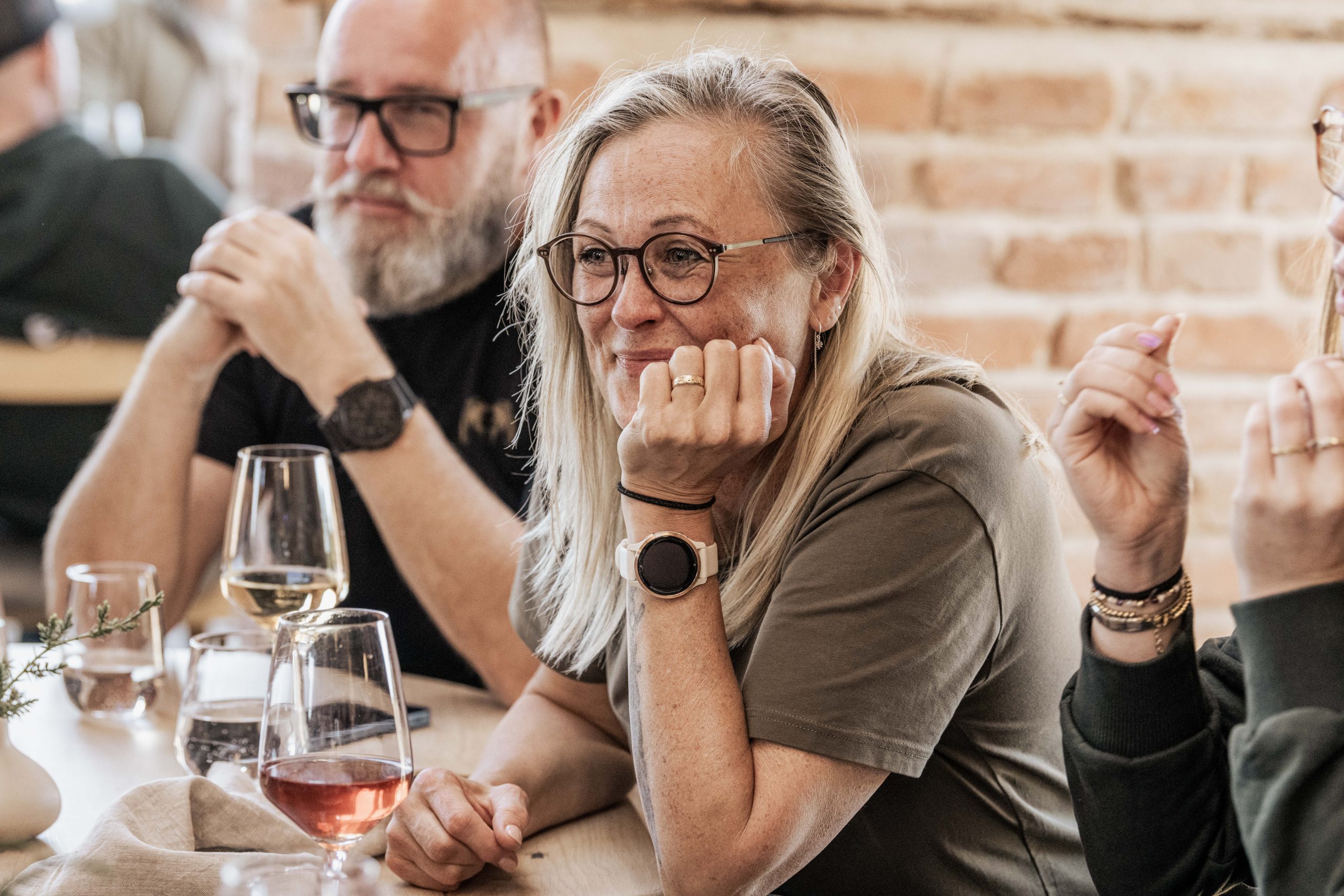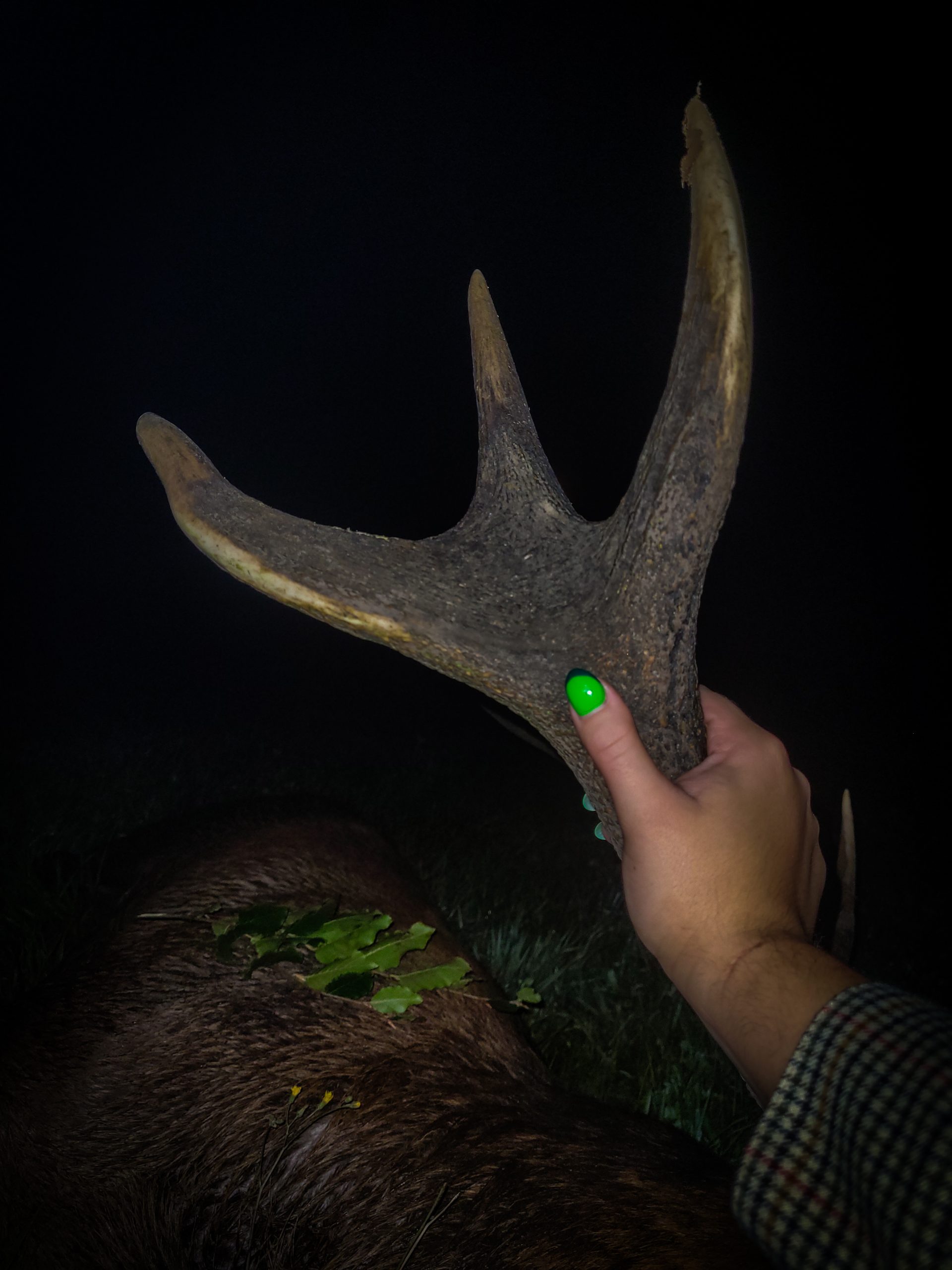Expert Contributor:
Freya Chalotte Askjaer, Theresa Rohrbach, Claudia Breit, Julia Nowak
For decades, hunting has carried the image of a male-dominated tradition — one rooted in generations of fathers and sons, camouflage gear, and rugged masculinity. But is that perception still true today? As more women step confidently into the world of hunting, the narrative is shifting.
For some, hunting is about ethical food and sustainable living. For others, it’s a continuation of family tradition or a deeper way to connect with nature. We spoke with four women from different backgrounds — Freya Chalotte Askjaer from Denmark, German huntresses Theresa Rohrbach and Claudia Breit, and Julia Nowak, a Polish hunter living in Sweden. They shared their personal stories, challenges, and reflections on what it means to be a woman in hunting today — not as outsiders, but as integral voices in the evolving landscape of the sport.
A personal path to hunting
For many, the journey into hunting begins with a love of the outdoors — a sentiment Freya exemplifies. She began hunting out of a practical desire to feed herself while spending summers in the Arizona desert: “It made more sense to hunt rabbit than to bring food from home or forage for berries,” she said. Though her family didn’t hunt, her passion for nature and ethical food choices led her to get her hunting license.
Theresa and Julia, on the other hand, grew up in hunting families where the tradition was passed down through generations. Hunting was part of their daily life from a young age, surrounded by parents and grandparents who taught them the values of respect for wildlife.
Claudia came from a different angle. Not raised in a hunting family, she was drawn to hunting by a need to understand where her meat came from and to take responsibility for it: “It wasn’t about the kill, but about stepping into nature’s rhythm, understanding wildlife, and becoming part of the ecosystem, not just a bystander.”
It wasn’t about the kill, but about stepping into nature’s rhythm, understanding wildlife, and becoming part of the ecosystem, not just a bystander.
Claudia Breit
- Claudia Breit
- Theresa Rohrbach
- Freya Charlotte Askjaer
- Julia Nowak
Technology that supports the hunt
Advanced gear, especially thermal imaging and optics, plays an increasingly important role in modern hunting — and for Claudia, Julia, and Theresa, it’s a game-changer. Claudia emphasizes how Pulsar thermal devices allow her not only to identify game but also to observe wildlife behavior and make better, more informed decisions: “It means fewer mistakes, cleaner shots, and ultimately: more respect for the animals I hunt.” Julia highlights safety: “Thermal technology incredibly increases safety while hunting at night.” With tools like Pulsar optics, hunters can operate more ethically, effectively, and confidently — even in low visibility or challenging conditions.
Overcoming challenges and changing culture
While advanced gear like thermal imaging is transforming how we hunt, equally significant are the shifts happening within the hunting community itself. As more women enter the field, the culture is evolving alongside the technology. When Freya started in Denmark, women made up only about 6% of hunters. Theresa notes that twenty-five years ago, women were just 1% of license holders in Germany, but now they’re around 7%. Claudia sees even more change: women are no longer just accepted, but actively shaping the hunting conversation with their unique perspectives.
“Today, my gender isn’t something I think about when it comes to hunting. I’m a hunter – no more, no less. I know my abilities, my values, and my equipment. I don’t need anyone to help me with hunting, skinning, butchering, or cooking. I enjoy hunting with my husband and feel equally at home in the company of both men and women,” shared Freya.
Today, my gender isn’t something I think about when it comes to hunting. I’m a hunter – no more, no less.
Freya Charlotte Askjaer
Theresa pointed out an interesting observation: “Hunting is changing and will change due to the increasing proportion of women. Women think differently to men, that’s just the way it is. Men often think simply and straightforwardly, which is not a bad thing, but sometimes it helps to look to the right and left. As I grew up with a fairly high proportion of women in the hunting industry, that’s the only way I know it and I can’t say exactly what has changed in the culture compared to the last 50 or 60 years.”
Still, challenges remain, but it’s normal to happen. Theresa recalls times when the physical demands were harder to meet alone: “To be honest, I have to admit that I don’t have the strength that the men have for some of the work in the hunting ground. But that’s not usually a bad thing, we divide up the work and help with the easier things.”
Julia highlights how hunting gear designed for women used to be rare, but today there are way more options: “A few years ago there was not so much hunting equipment that was dedicated for women. No hunting clothes in women’s shape and sizes, no lighter and shorter weapons, etc., which made it difficult to feel 100% comfortable during hunting. But now it is much better! We have a much bigger choice of things that fit us better.”
From the personal archive of Julia Nowak
Advice for women interested in hunting
“Find mentors and role models – women you can relate to. Follow them on social media, learn from them, and connect with them in real life. There are so many communities now that it’s easier than ever to find like-minded hunters. Read, learn, and pursue hunting with passion and ethics. It’s in our roots – we were once hunters and gatherers. Women today are more independent than ever, and that independence fits perfectly with becoming a capable, ethical hunter,” shares Freya.
Claudia’s advice is to “don’t wait for permission. Don’t wait to be perfect. Get out there, ask questions, find a mentor and trust your instincts. You don’t have to fit into anyone else’s idea of what a hunter should look like. Hunting needs more voices, more diversity, and more heart. If you feel drawn to it, follow that feeling. It’s not about proving yourself. It’s about discovering who you are in nature.”
Women in hunting are not just breaking stereotypes – they are enriching the tradition with new values, skills, and perspectives. At Pulsar, we are proud to support these women as they lead the way toward a more inclusive and diverse hunting culture.





